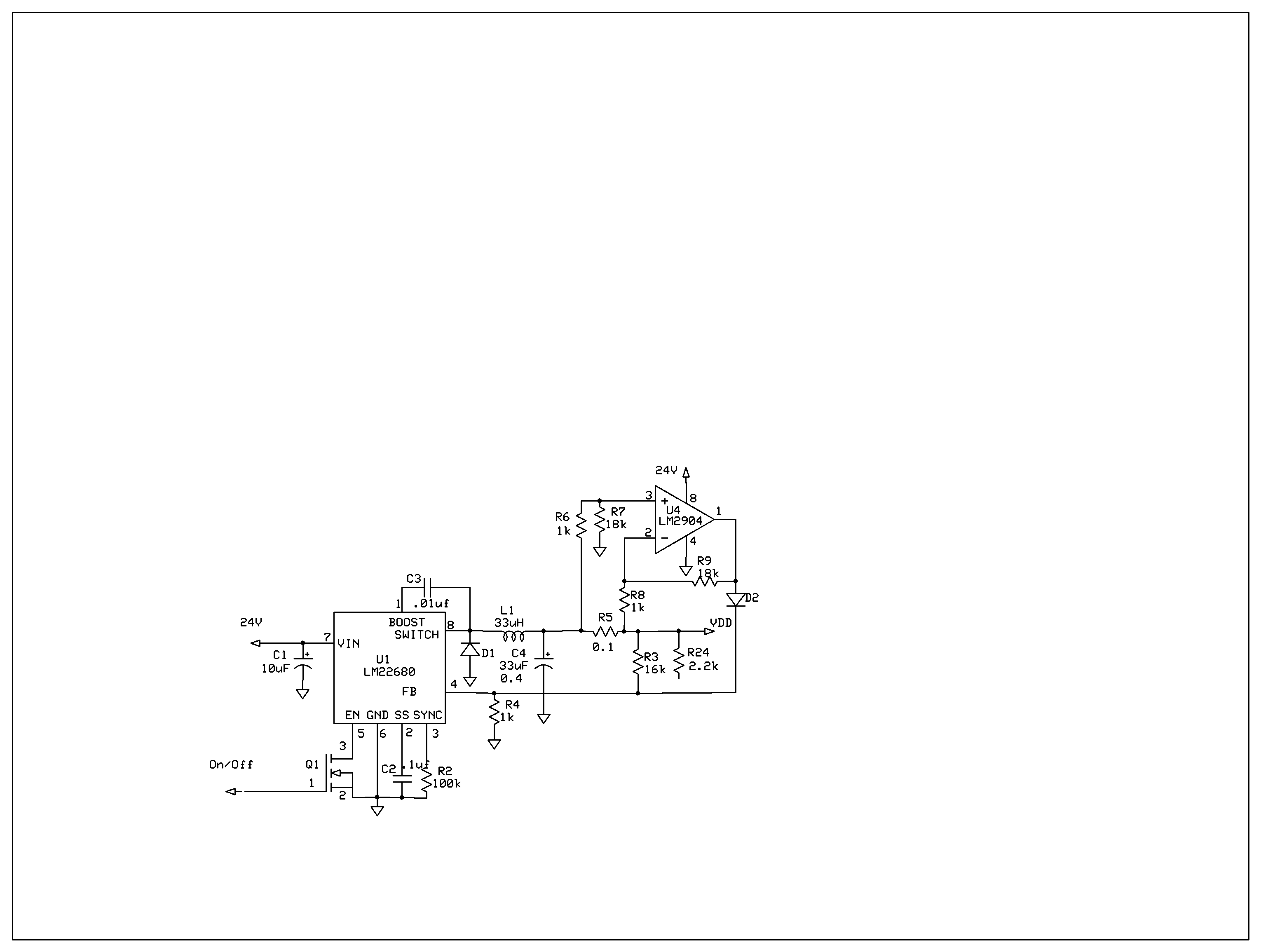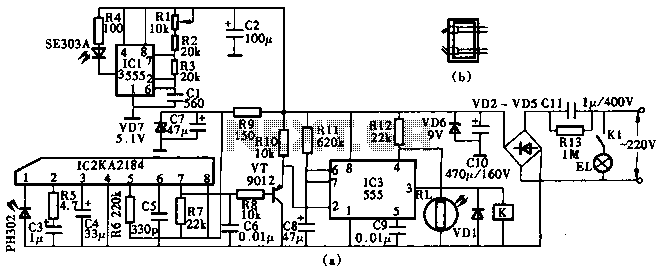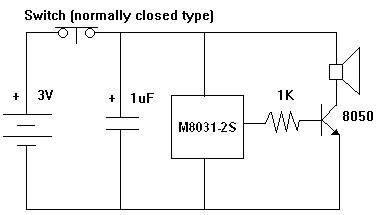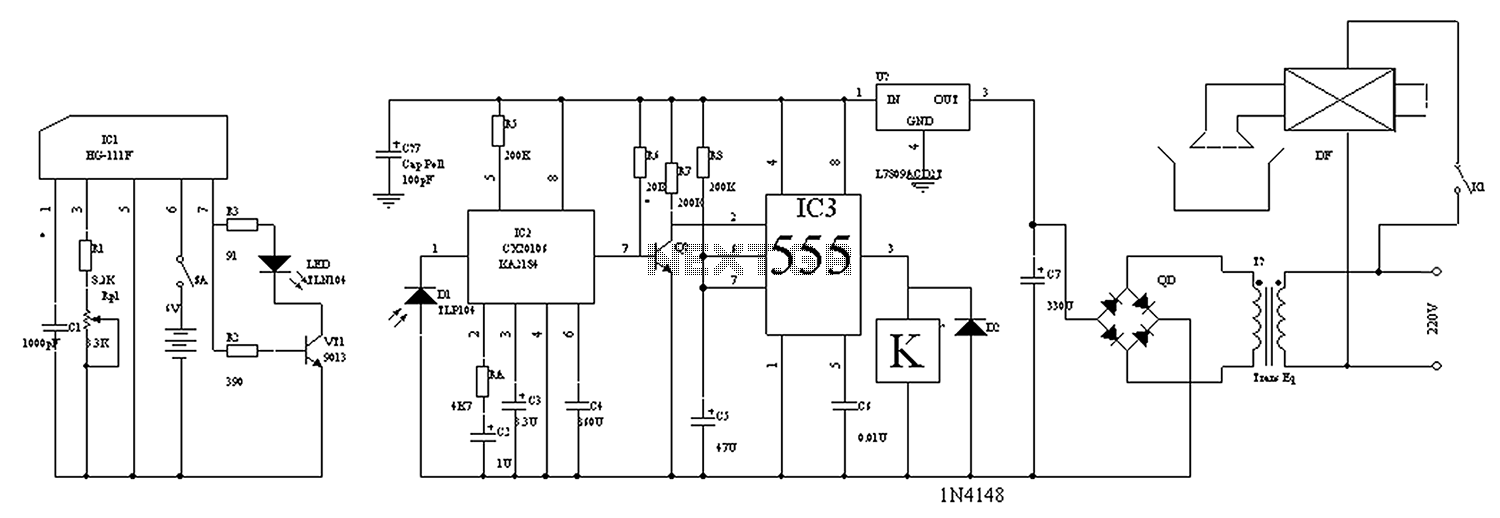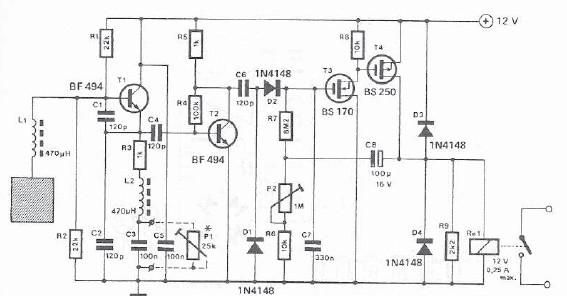
Smoke Detector Circuit
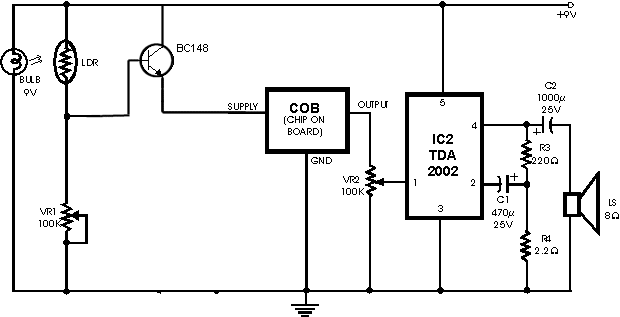
The circuit operates on the principle of detecting smoke produced during a fire. Smoke reduces the amount of light reaching a Light Dependent Resistor (LDR) placed between a light bulb and the LDR. This configuration is known as an optical smoke detector. It is important to note that this circuit is intended for electronic projects and should not be used as a home smoke detector. As the smoke density increases, the resistance of the LDR rises, which in turn causes the voltage at the base of a transistor to increase, thereby completing the power supply to the Chip-On-Board (COB) component. The sensitivity of this smoke detector is influenced by the distance between the bulb and the LDR, as well as the adjustment of a preset variable resistor (VR1). By strategically positioning the bulb and the LDR and adjusting VR1, optimal sensitivity can be achieved.
The optical smoke detector circuit utilizes a light bulb as a source of illumination and an LDR as a sensor. When smoke enters the detection area, it scatters the light emitted by the bulb, resulting in decreased light intensity reaching the LDR. The LDR's resistance varies inversely with the light intensity; thus, as the light intensity diminishes due to smoke presence, the resistance of the LDR increases. This change in resistance affects the voltage at the base of the transistor, which is configured to switch on the COB.
The COB serves as an indicator or alarm in this setup, and its operation is contingent on the transistor being activated by the voltage changes at its base. The circuit can be fine-tuned for sensitivity by adjusting VR1, which allows for customization based on the specific application or environment where the detector is deployed. The placement of the bulb and LDR is also critical; positioning them too far apart may result in insufficient sensitivity, while placing them too close may lead to false triggering.
To ensure reliable operation, it is advisable to conduct tests in various smoke conditions to calibrate the sensitivity accurately. Additionally, while this circuit can be a valuable tool for educational purposes and electronic projects, it should not replace conventional smoke detectors designed for residential safety.It relies on the smoke that is produced in the event of a fire and passes between a bulb and an LDR, the amount of light falling on the LDR decreases. This type of circuit is called optical smoke detector. Do not use it as a home smoke detector it`s jus for electronic projects. This causes the resistance of LDR to increase and the voltage at the b ase of the transistor is pulled high due to which the supply to the COB (chip-on-board) is completed. The sensitivity of the smoke detector depends on the distance between bulb and LDR as well as setting of preset VR1.
Thus by placing the bulb and the LDR at appropriate distances, one may vary preset VR1 to get optimum sensitivity. 🔗 External reference
The optical smoke detector circuit utilizes a light bulb as a source of illumination and an LDR as a sensor. When smoke enters the detection area, it scatters the light emitted by the bulb, resulting in decreased light intensity reaching the LDR. The LDR's resistance varies inversely with the light intensity; thus, as the light intensity diminishes due to smoke presence, the resistance of the LDR increases. This change in resistance affects the voltage at the base of the transistor, which is configured to switch on the COB.
The COB serves as an indicator or alarm in this setup, and its operation is contingent on the transistor being activated by the voltage changes at its base. The circuit can be fine-tuned for sensitivity by adjusting VR1, which allows for customization based on the specific application or environment where the detector is deployed. The placement of the bulb and LDR is also critical; positioning them too far apart may result in insufficient sensitivity, while placing them too close may lead to false triggering.
To ensure reliable operation, it is advisable to conduct tests in various smoke conditions to calibrate the sensitivity accurately. Additionally, while this circuit can be a valuable tool for educational purposes and electronic projects, it should not replace conventional smoke detectors designed for residential safety.It relies on the smoke that is produced in the event of a fire and passes between a bulb and an LDR, the amount of light falling on the LDR decreases. This type of circuit is called optical smoke detector. Do not use it as a home smoke detector it`s jus for electronic projects. This causes the resistance of LDR to increase and the voltage at the b ase of the transistor is pulled high due to which the supply to the COB (chip-on-board) is completed. The sensitivity of the smoke detector depends on the distance between bulb and LDR as well as setting of preset VR1.
Thus by placing the bulb and the LDR at appropriate distances, one may vary preset VR1 to get optimum sensitivity. 🔗 External reference
